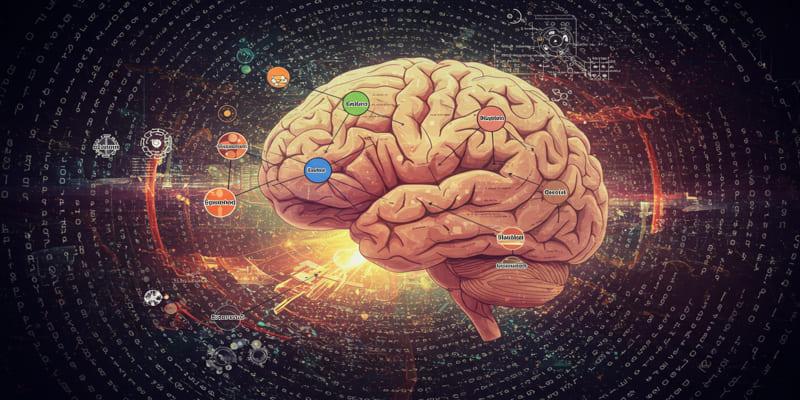The CHIPS and Science Act has grown from a $52 billion semiconductor investment to a bold strategy targeting technologies like quantum computing and AI. This shift redefines U.S. technological sovereignty, prioritizing leadership in critical innovations. Beyond Silicon Valley, its impact spans national security and economic competitiveness, reshaping the future of American technological advancement.
The CHIPS Act was born from supply chain disruptions and geopolitical tensions, aiming to reduce U.S. reliance on foreign semiconductor production. It prioritizes domestic chip manufacturing by offering tax incentives and direct funding for companies building fabrication facilities in the U.S. This legislation addresses immediate supply chain challenges while fostering long-term resilience in critical industries, ensuring America remains competitive in the global semiconductor market for years to come.
But very soon, policymakers realized that semiconductors cannot guarantee technological future of America. The speed at which quantum computing and AI technologies were developing required an even more complex solution the one that would be able to serve various technological frontiers at a time.

The inclusion of quantum computing within the CHIPS Act framework represents a strategic recognition of quantum's transformative potential. Quantum computers promise to solve problems that are currently impossible for classical computers, from materials development to optimizing financial portfolios and simulating complex chemical reactions.
The expanded Act aligns closely with the National Quantum Initiative, creating synergies between existing research programs and new manufacturing capabilities. This coordination ensures that quantum research doesn't remain confined to laboratories but transitions into practical applications.
Federal agencies now have enhanced authority to fund quantum research facilities, establish quantum computing centers, and support workforce development programs. These initiatives create a pipeline from basic research to commercial applications, ensuring that American innovations don't migrate overseas for development.
Unlike traditional semiconductors, quantum computers require entirely different manufacturing approaches. The Act addresses these unique challenges by funding specialized fabrication facilities capable of producing quantum processors, supporting components, and associated technologies.
This manufacturing focus distinguishes the American approach from competitors who may excel in research but lack the industrial capacity to scale quantum technologies. By building both research capabilities and manufacturing infrastructure, the Act creates a comprehensive quantum ecosystem.
Artificial intelligence has become the defining technology of the current decade, influencing everything from autonomous vehicles to medical diagnosis. The CHIPS Act's expansion into AI reflects the understanding that advanced semiconductors and AI capabilities are inextricably linked.
Modern AI applications require specialized processors designed specifically for machine learning workloads. The Act now supports development of AI-specific chips, including graphics processing units (GPUs), tensor processing units (TPUs), and neuromorphic processors.
This support extends beyond traditional semiconductor companies to include AI-focused hardware startups and research institutions. By fostering innovation across the entire AI hardware ecosystem, the Act ensures that American companies can compete in both AI software and the underlying hardware infrastructure.
The expansion recognizes that AI deployment increasingly occurs at the network edge, requiring new approaches to chip design and manufacturing. Edge AI applications demand processors that can deliver high performance while operating under strict power and size constraints.
Funding now supports research into edge AI architectures, low-power AI chips, and distributed computing systems. These investments position American companies to lead in the next generation of AI deployment, from autonomous vehicles to smart city infrastructure.
The expanded CHIPS Act has catalyzed significant private sector investment, with companies announcing new facilities and research partnerships worth hundreds of billions of dollars. This private investment multiplies the Act's impact far beyond the original government funding.
The quantum and AI expansions create demand for highly skilled workers across multiple disciplines. The Act addresses this challenge through enhanced funding for STEM education, workforce retraining programs, and partnerships between industry and educational institutions.
These workforce development initiatives recognize that technological sovereignty requires human capital alongside manufacturing infrastructure. By investing in people and facilities simultaneously, the Act creates sustainable competitive advantages that are difficult for competitors to replicate.
The expanded Act encourages geographic distribution of quantum and AI facilities, preventing excessive concentration in traditional technology hubs. This approach spreads economic benefits while creating resilient networks of interconnected research and manufacturing sites.
Smaller cities and rural areas now have opportunities to participate in the quantum and AI economy, supported by federal investments in infrastructure and workforce development. This geographic diversification strengthens national security while promoting inclusive economic growth.

The expansion of the CHIPS Act into quantum and AI technologies reflects deep concerns about national security and technological competitiveness. These technologies have profound implications for military capabilities, intelligence operations, and critical infrastructure protection.
Quantum computers threaten to render current encryption methods obsolete, creating urgent needs for quantum-resistant cryptography. The Act supports development of both quantum computers and quantum-safe security technologies, ensuring that America can both exploit and defend against quantum capabilities.
This dual approach recognizes that quantum technologies will fundamentally change cybersecurity landscapes. By investing in both offensive and defensive quantum capabilities, the Act positions America to maintain security advantages in a quantum-enabled world.
Military applications of AI continue expanding, from autonomous weapons systems to predictive maintenance for complex equipment. The Act's AI provisions support development of military-relevant AI technologies while ensuring that advances benefit civilian applications.
This dual-use approach maximizes the return on federal investment while maintaining America's military technological edge. By fostering AI innovation across military and civilian sectors, the Act creates synergies that benefit both national security and economic competitiveness.
Despite its ambitious scope, the expanded CHIPS Act faces significant implementation challenges that could affect its ultimate success. These challenges range from technical difficulties to bureaucratic obstacles and international competition.
Quantum computing and AI technologies are inherently complex, requiring sustained research and development efforts with uncertain timelines. Unlike traditional semiconductor manufacturing, these technologies lack established production methods and supply chains.
The Act addresses this uncertainty by funding multiple research approaches simultaneously, recognizing that breakthrough technologies often emerge from unexpected directions. This portfolio approach increases the likelihood of success while managing risks associated with emerging technologies.
Other nations, particularly China, are making substantial investments in quantum and AI technologies. The expanded CHIPS Act represents America's response to this competition, but success will depend on execution rather than just funding levels.
The Act's emphasis on partnerships with allied nations helps address this challenge by creating collaborative networks that leverage shared resources and expertise. These partnerships multiply America's effective investment while preventing technological isolation.
The CHIPS Act's expansion into quantum and AI marks a pivotal shift in U.S. technology policy, creating a model for supporting emerging technologies. By integrating manufacturing, research, and workforce development, it offers a comprehensive framework applicable to sectors like biotechnology and advanced materials. As investments grow, the convergence of semiconductors, quantum computing, and AI could spark new industries and applications, transforming how Americans work, communicate, and live in unprecedented ways.

Explore how Advanced Topic Modeling with LLMs transforms SEO keyword research and content strategy for better search rankings and user engagement.

How to evaluate Agentic AI systems with modern metrics, frameworks, and best practices to ensure effectiveness, autonomy, and real-world impact in 2025.

AIOps redefines IT operations by leveraging AI to reduce costs, enhance efficiency, and drive strategic business value in a digital-first world.

Selector is a versatile platform for anomaly detection and network security, using advanced AI for precise threat identification and prevention.

How IT monitoring platforms enhance system reliability, enable faster issue resolution, and promote data-driven decisions.

How AI-powered automation is transforming network operations, delivering efficiency, scalability, and reliability with minimal human intervention.

How AI enhances forecasting accuracy while addressing limitations like rare events and data quality through human-AI collaboration.

Find out how to stop X from using your posts to train its AI models.

Explore how ChatGPT’s AI conversation feature works, its benefits, and how it impacts user interactions.

How data mining empowers businesses with insights for smarter decisions, improved efficiency, and a competitive edge.

Google’s Gemini Live now works on most Android phones, offering hands-free AI voice assistance, translations, and app control

Google’s Gemini 2.0 boosts AI speed, personalization, and multi-modal input with seamless integration across Google apps